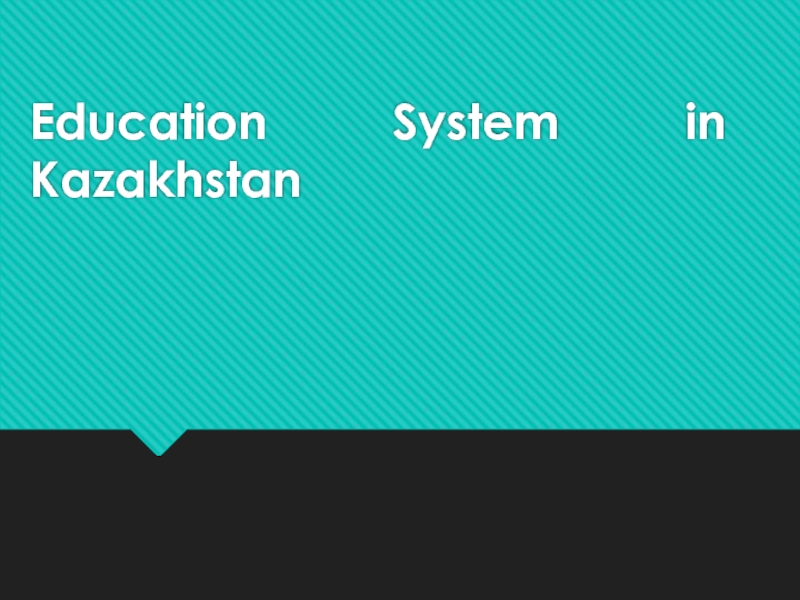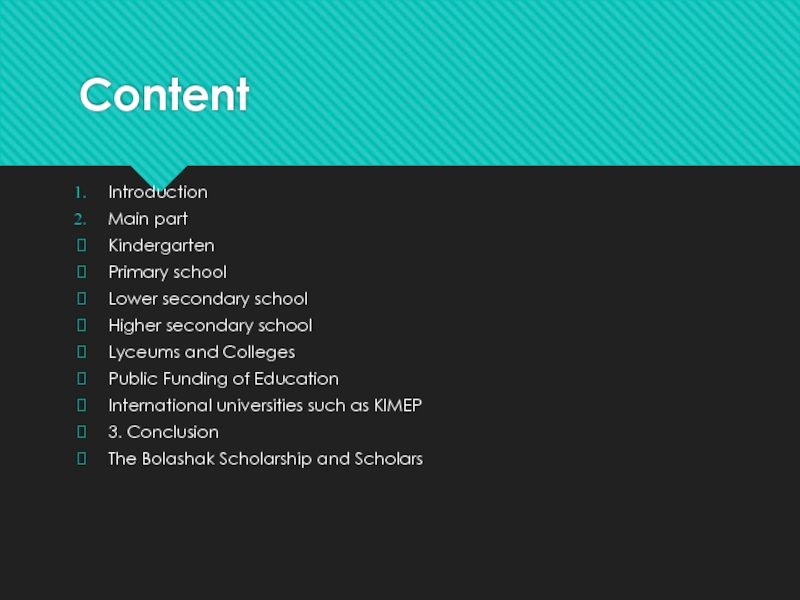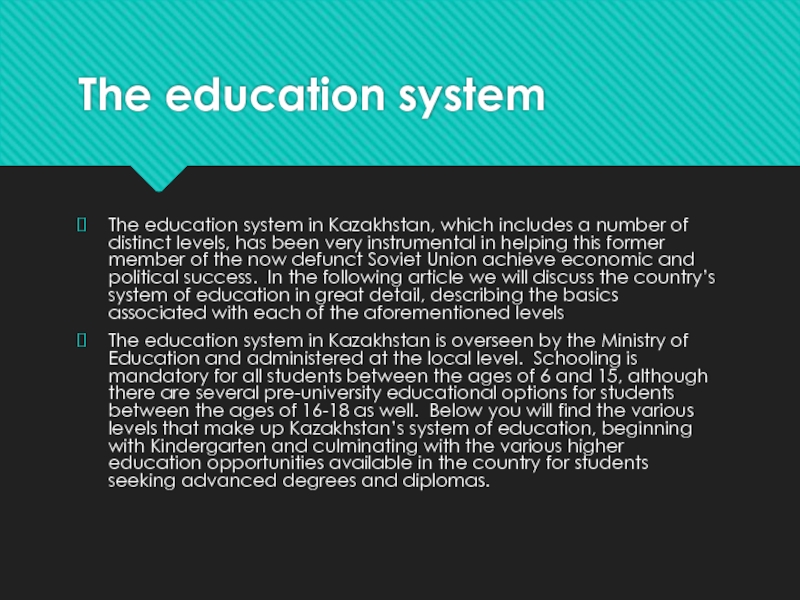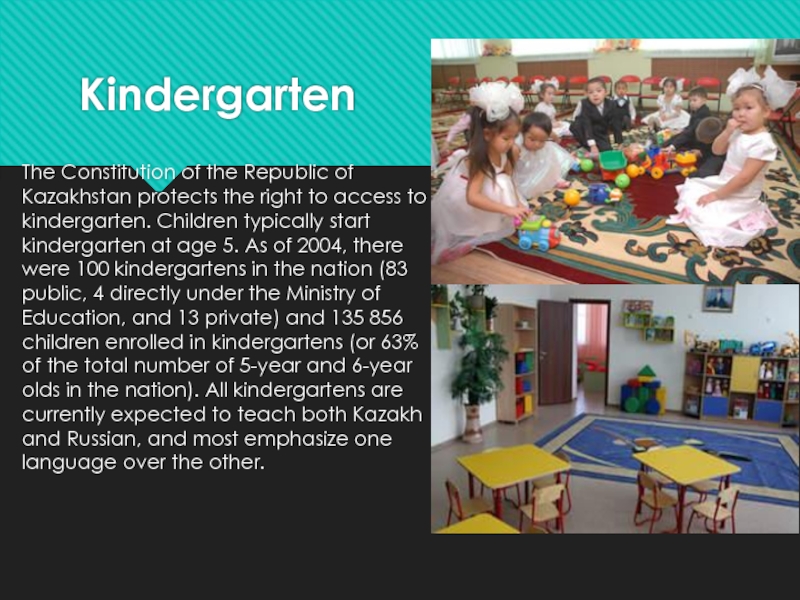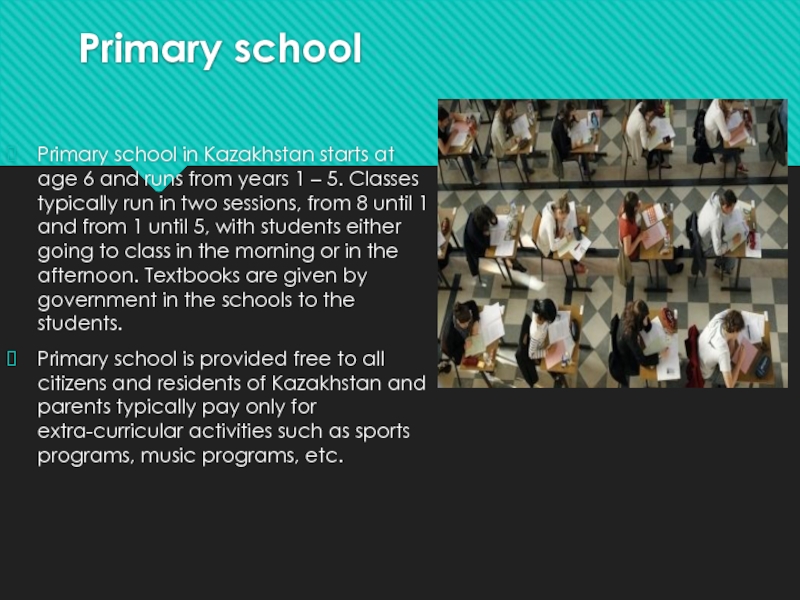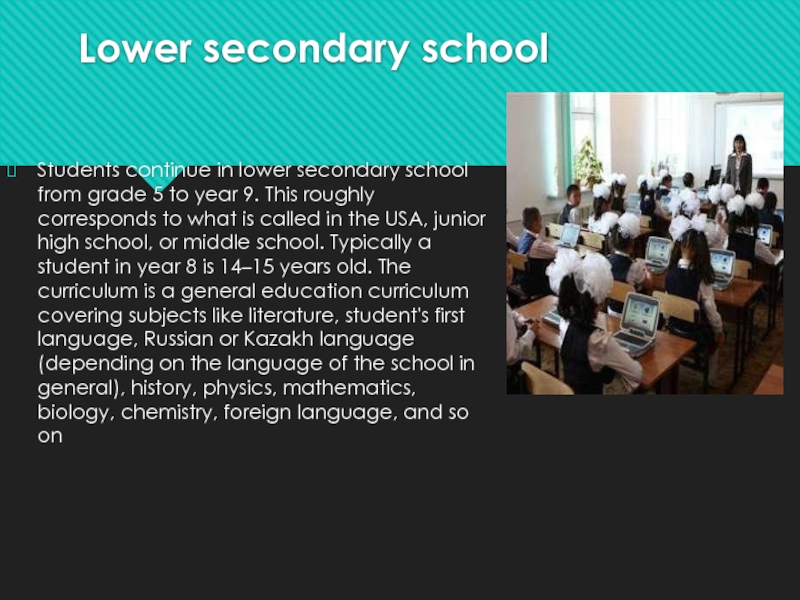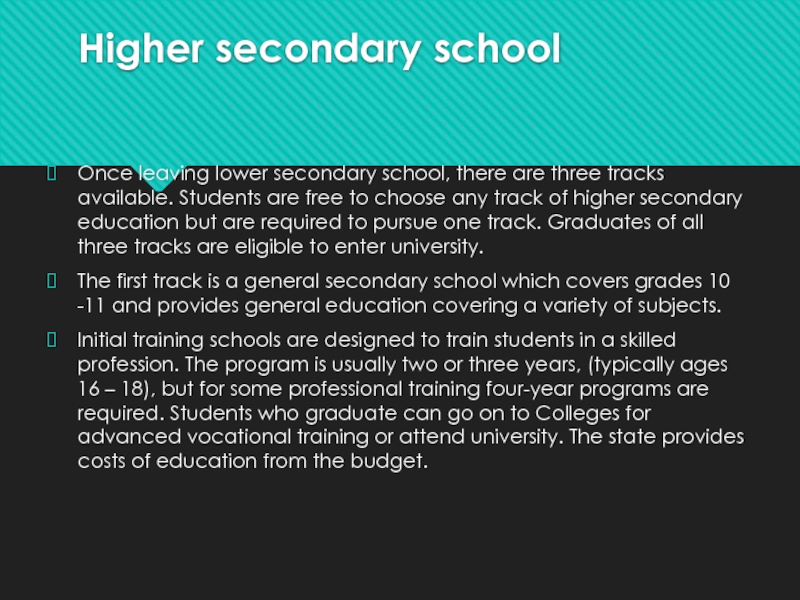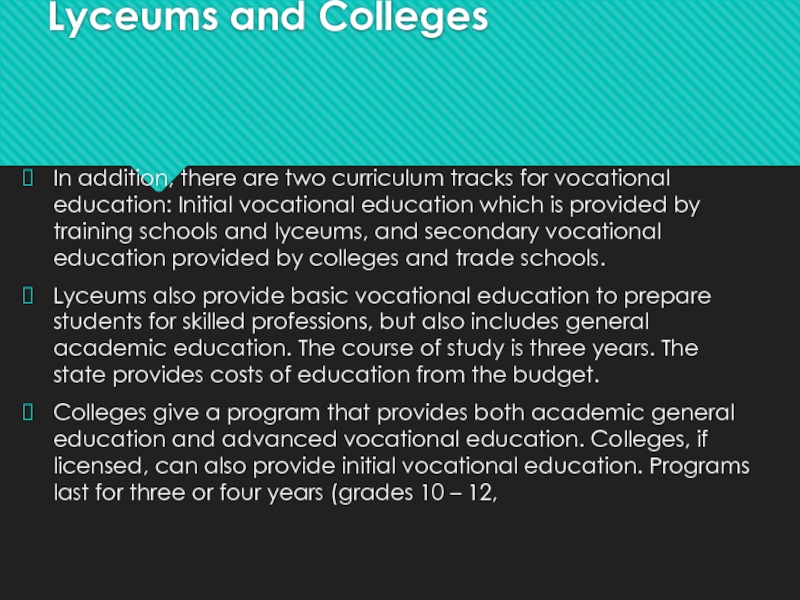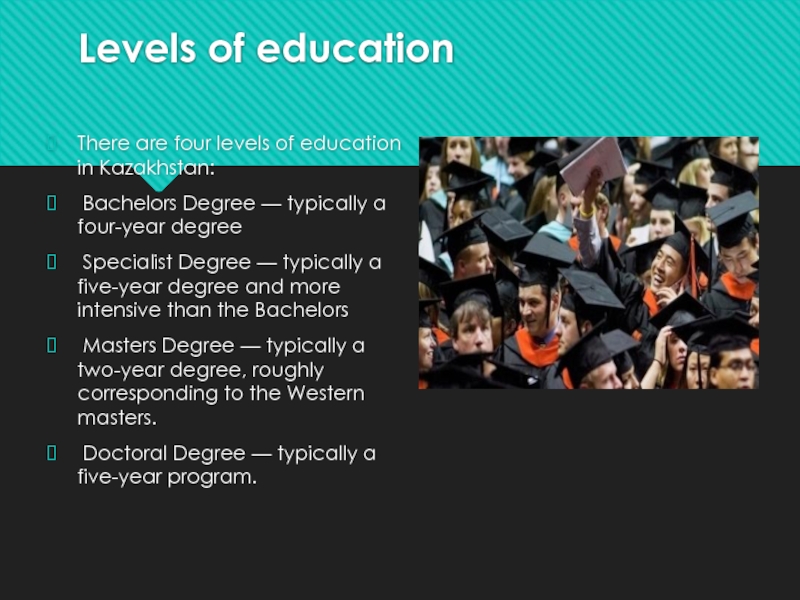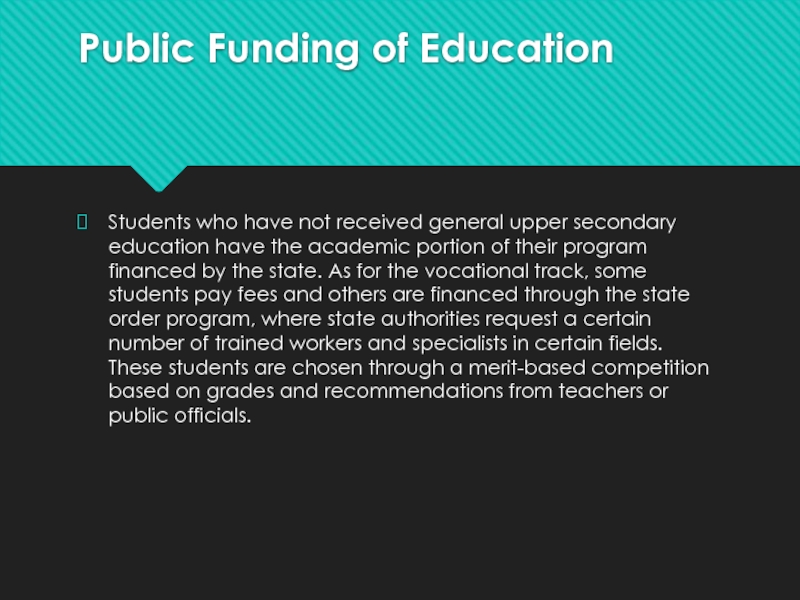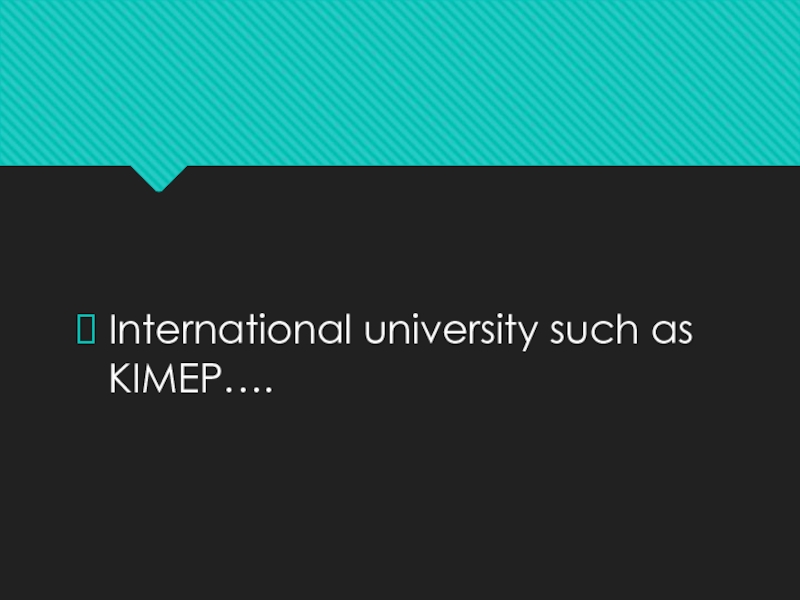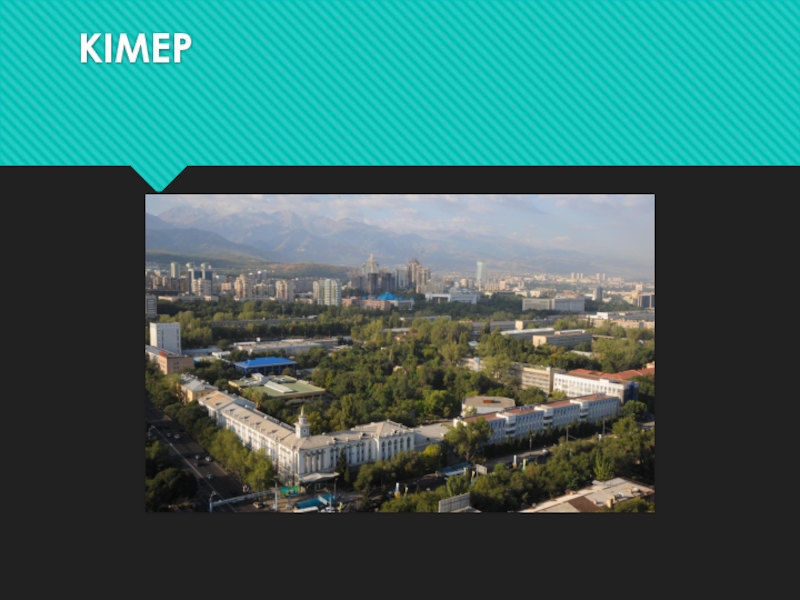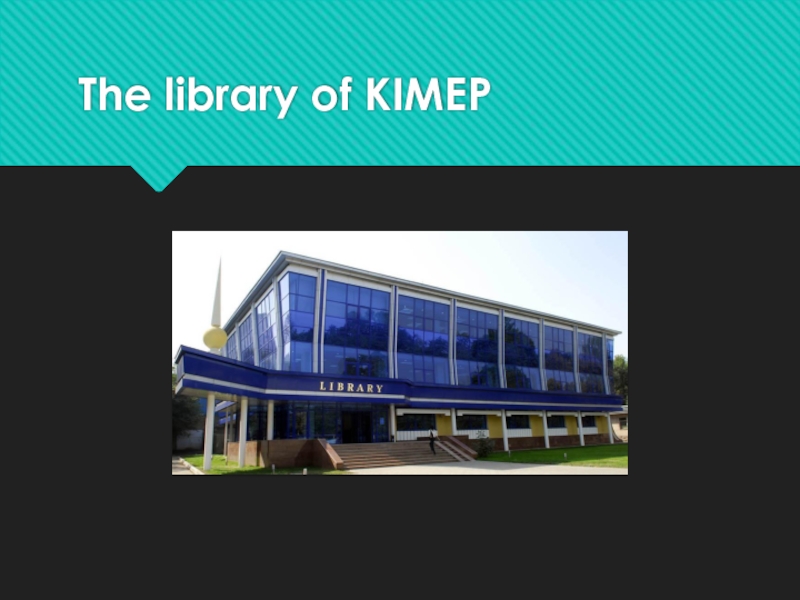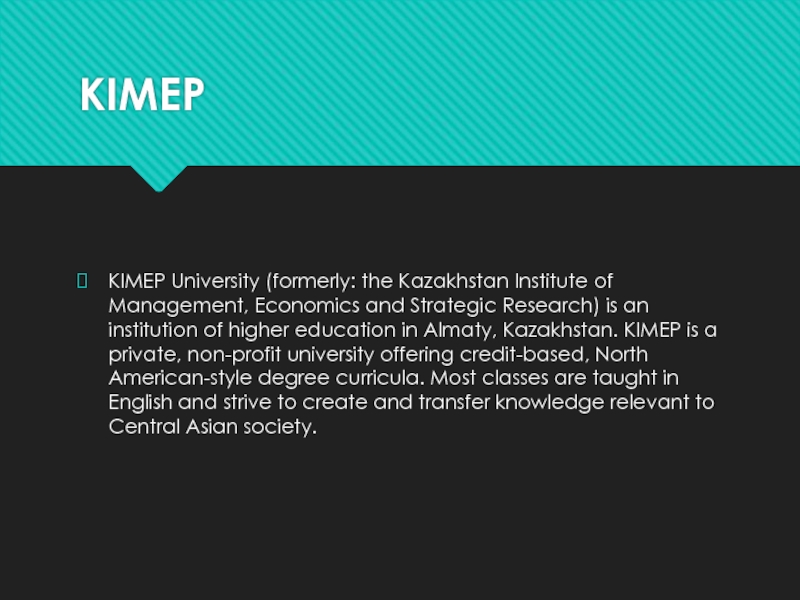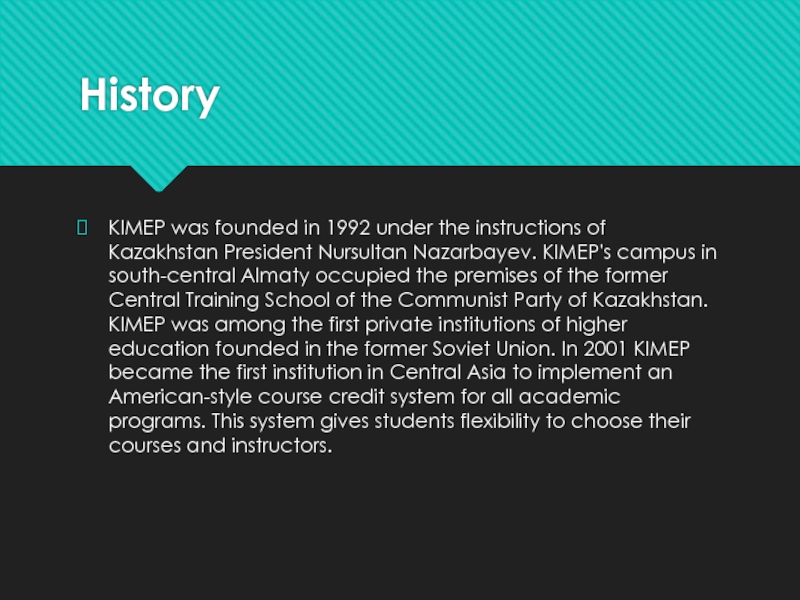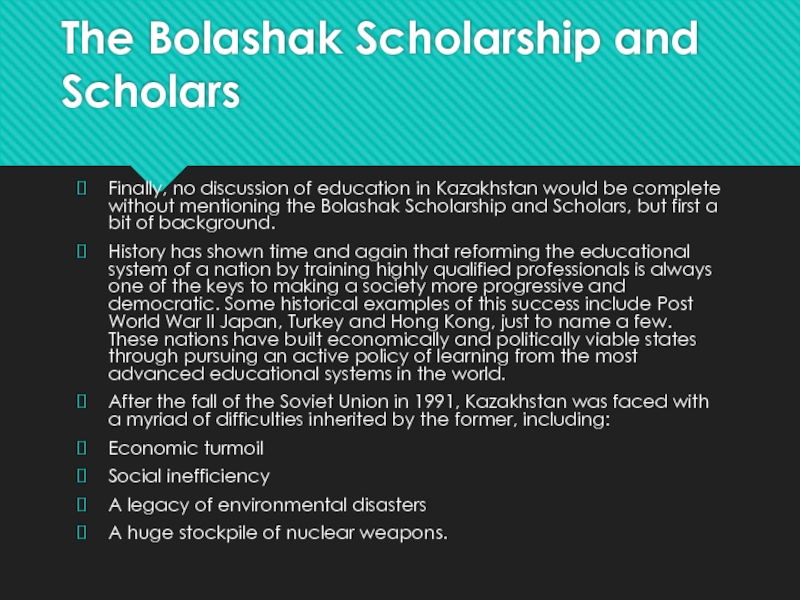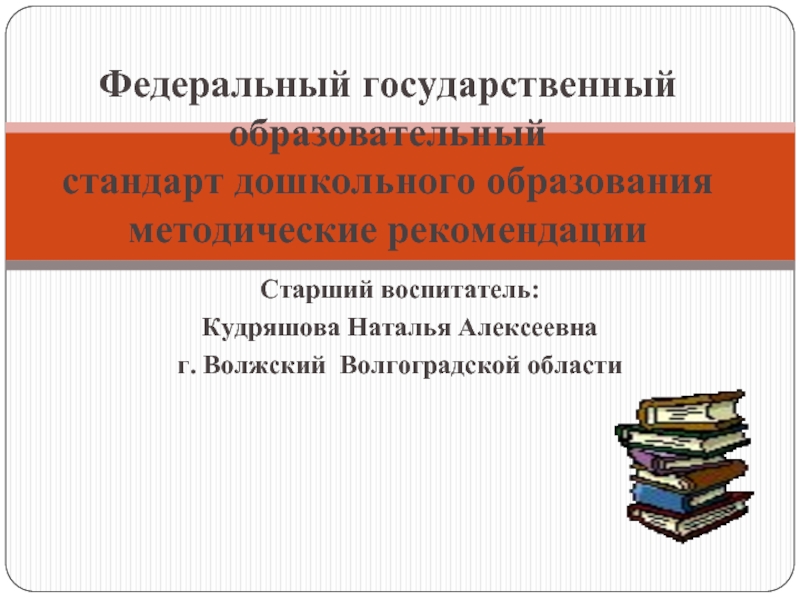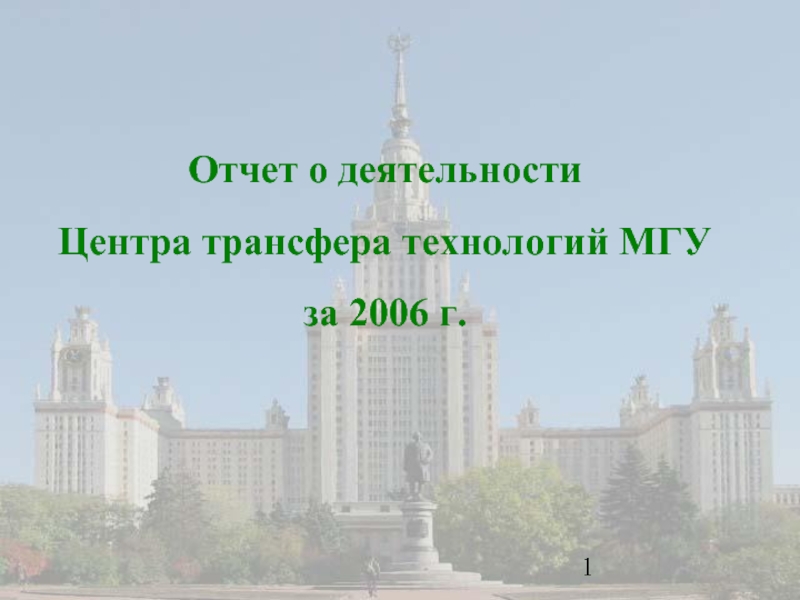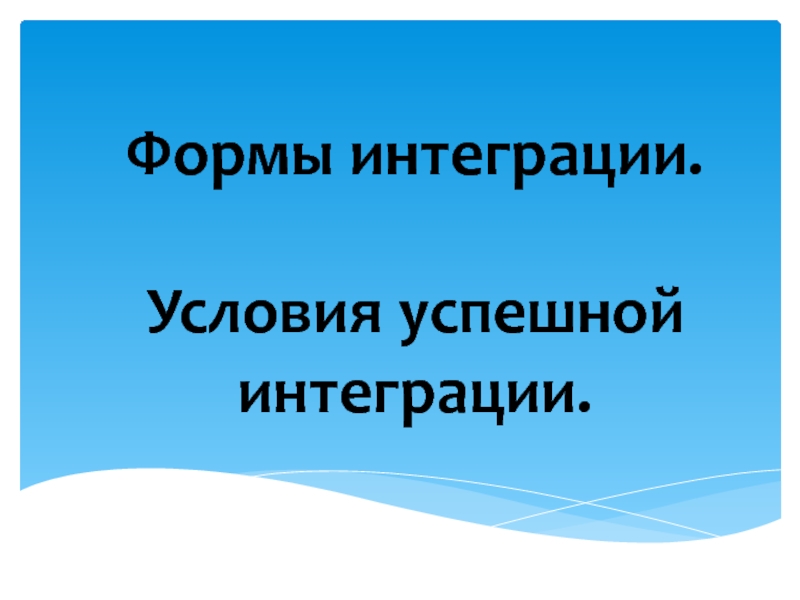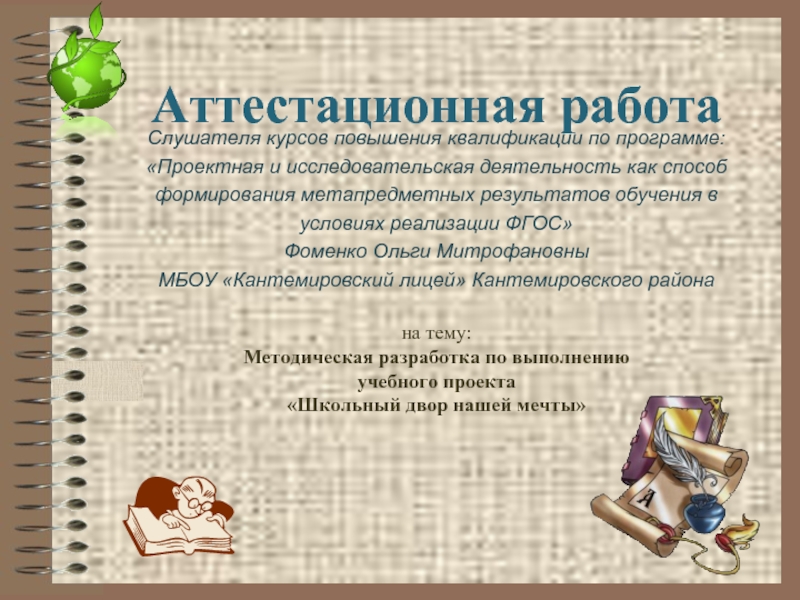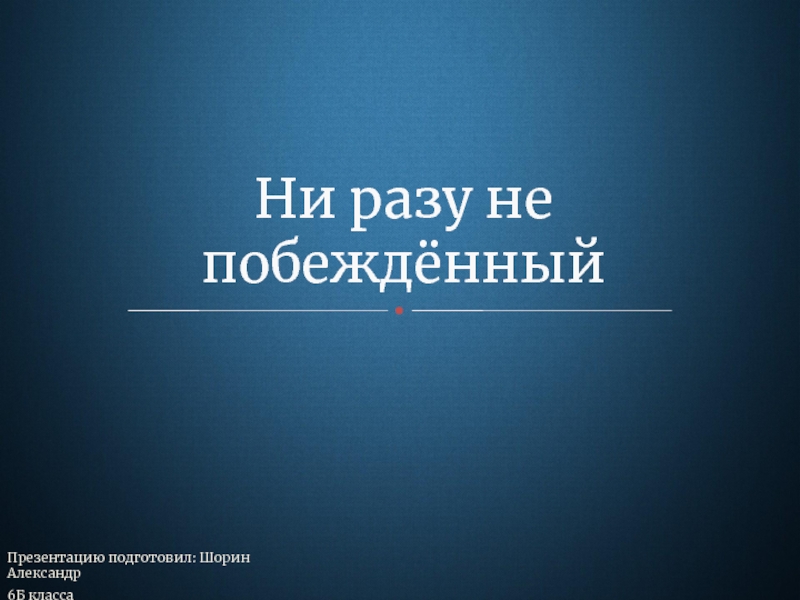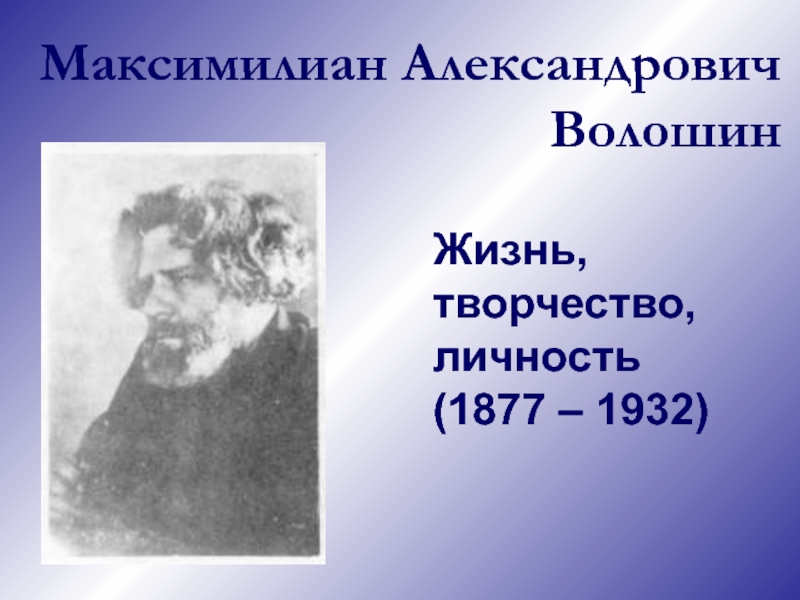- Главная
- Разное
- Дизайн
- Бизнес и предпринимательство
- Аналитика
- Образование
- Развлечения
- Красота и здоровье
- Финансы
- Государство
- Путешествия
- Спорт
- Недвижимость
- Армия
- Графика
- Культурология
- Еда и кулинария
- Лингвистика
- Английский язык
- Астрономия
- Алгебра
- Биология
- География
- Детские презентации
- Информатика
- История
- Литература
- Маркетинг
- Математика
- Медицина
- Менеджмент
- Музыка
- МХК
- Немецкий язык
- ОБЖ
- Обществознание
- Окружающий мир
- Педагогика
- Русский язык
- Технология
- Физика
- Философия
- Химия
- Шаблоны, картинки для презентаций
- Экология
- Экономика
- Юриспруденция
Education system in Kazakhstan презентация
Содержание
- 1. Education system in Kazakhstan
- 2. Content Introduction Main part Kindergarten Primary school
- 3. The education system The education system in
- 4. Kindergarten The Constitution of the Republic of
- 5. Primary school Primary school in Kazakhstan
- 6. Lower secondary school Students continue in
- 7. Higher secondary school Once leaving lower
- 8. Lyceums and Colleges In addition, there
- 9. Levels of education There are four
- 10. Public Funding of Education Students who
- 11. International university such as KIMEP….
- 12. KIMEP
- 13. The library of KIMEP
- 14. KIMEP KIMEP University (formerly: the Kazakhstan Institute
- 15. History KIMEP was founded in 1992 under
- 16. The Bolashak Scholarship and Scholars Finally, no
- 17. THANKS FOR YOUR ATTENTION
Слайд 2Content
Introduction
Main part
Kindergarten
Primary school
Lower secondary school
Higher secondary school
Lyceums and Colleges
Public Funding of
Education
International universities such as KIMEP
3. Conclusion
The Bolashak Scholarship and Scholars
International universities such as KIMEP
3. Conclusion
The Bolashak Scholarship and Scholars
Слайд 3The education system
The education system in Kazakhstan, which includes a number
of distinct levels, has been very instrumental in helping this former member of the now defunct Soviet Union achieve economic and political success. In the following article we will discuss the country’s system of education in great detail, describing the basics associated with each of the aforementioned levels
The education system in Kazakhstan is overseen by the Ministry of Education and administered at the local level. Schooling is mandatory for all students between the ages of 6 and 15, although there are several pre-university educational options for students between the ages of 16-18 as well. Below you will find the various levels that make up Kazakhstan’s system of education, beginning with Kindergarten and culminating with the various higher education opportunities available in the country for students seeking advanced degrees and diplomas.
The education system in Kazakhstan is overseen by the Ministry of Education and administered at the local level. Schooling is mandatory for all students between the ages of 6 and 15, although there are several pre-university educational options for students between the ages of 16-18 as well. Below you will find the various levels that make up Kazakhstan’s system of education, beginning with Kindergarten and culminating with the various higher education opportunities available in the country for students seeking advanced degrees and diplomas.
Слайд 4Kindergarten
The Constitution of the Republic of Kazakhstan protects the right to
access to kindergarten. Children typically start kindergarten at age 5. As of 2004, there were 100 kindergartens in the nation (83 public, 4 directly under the Ministry of Education, and 13 private) and 135 856 children enrolled in kindergartens (or 63% of the total number of 5-year and 6-year olds in the nation). All kindergartens are currently expected to teach both Kazakh and Russian, and most emphasize one language over the other.
Слайд 5Primary school
Primary school in Kazakhstan starts at age 6 and runs
from years 1 – 5. Classes typically run in two sessions, from 8 until 1 and from 1 until 5, with students either going to class in the morning or in the afternoon. Textbooks are given by government in the schools to the students.
Primary school is provided free to all citizens and residents of Kazakhstan and parents typically pay only for extra-curricular activities such as sports programs, music programs, etc.
Primary school is provided free to all citizens and residents of Kazakhstan and parents typically pay only for extra-curricular activities such as sports programs, music programs, etc.
Слайд 6Lower secondary school
Students continue in lower secondary school from grade 5
to year 9. This roughly corresponds to what is called in the USA, junior high school, or middle school. Typically a student in year 8 is 14–15 years old. The curriculum is a general education curriculum covering subjects like literature, student's first language, Russian or Kazakh language (depending on the language of the school in general), history, physics, mathematics, biology, chemistry, foreign language, and so on
Слайд 7Higher secondary school
Once leaving lower secondary school, there are three tracks
available. Students are free to choose any track of higher secondary education but are required to pursue one track. Graduates of all three tracks are eligible to enter university.
The first track is a general secondary school which covers grades 10 -11 and provides general education covering a variety of subjects.
Initial training schools are designed to train students in a skilled profession. The program is usually two or three years, (typically ages 16 – 18), but for some professional training four-year programs are required. Students who graduate can go on to Colleges for advanced vocational training or attend university. The state provides costs of education from the budget.
The first track is a general secondary school which covers grades 10 -11 and provides general education covering a variety of subjects.
Initial training schools are designed to train students in a skilled profession. The program is usually two or three years, (typically ages 16 – 18), but for some professional training four-year programs are required. Students who graduate can go on to Colleges for advanced vocational training or attend university. The state provides costs of education from the budget.
Слайд 8Lyceums and Colleges
In addition, there are two curriculum tracks for vocational
education: Initial vocational education which is provided by training schools and lyceums, and secondary vocational education provided by colleges and trade schools.
Lyceums also provide basic vocational education to prepare students for skilled professions, but also includes general academic education. The course of study is three years. The state provides costs of education from the budget.
Colleges give a program that provides both academic general education and advanced vocational education. Colleges, if licensed, can also provide initial vocational education. Programs last for three or four years (grades 10 – 12,
Lyceums also provide basic vocational education to prepare students for skilled professions, but also includes general academic education. The course of study is three years. The state provides costs of education from the budget.
Colleges give a program that provides both academic general education and advanced vocational education. Colleges, if licensed, can also provide initial vocational education. Programs last for three or four years (grades 10 – 12,
Слайд 9Levels of education
There are four levels of education in Kazakhstan:
Bachelors
Degree — typically a four-year degree
Specialist Degree — typically a five-year degree and more intensive than the Bachelors
Masters Degree — typically a two-year degree, roughly corresponding to the Western masters.
Doctoral Degree — typically a five-year program.
Specialist Degree — typically a five-year degree and more intensive than the Bachelors
Masters Degree — typically a two-year degree, roughly corresponding to the Western masters.
Doctoral Degree — typically a five-year program.
Слайд 10Public Funding of Education
Students who have not received general upper secondary
education have the academic portion of their program financed by the state. As for the vocational track, some students pay fees and others are financed through the state order program, where state authorities request a certain number of trained workers and specialists in certain fields. These students are chosen through a merit-based competition based on grades and recommendations from teachers or public officials.
Слайд 14KIMEP
KIMEP University (formerly: the Kazakhstan Institute of Management, Economics and Strategic
Research) is an institution of higher education in Almaty, Kazakhstan. KIMEP is a private, non-profit university offering credit-based, North American-style degree curricula. Most classes are taught in English and strive to create and transfer knowledge relevant to Central Asian society.
Слайд 15History
KIMEP was founded in 1992 under the instructions of Kazakhstan President
Nursultan Nazarbayev. KIMEP's campus in south-central Almaty occupied the premises of the former Central Training School of the Communist Party of Kazakhstan. KIMEP was among the first private institutions of higher education founded in the former Soviet Union. In 2001 KIMEP became the first institution in Central Asia to implement an American-style course credit system for all academic programs. This system gives students flexibility to choose their courses and instructors.
Слайд 16The Bolashak Scholarship and Scholars
Finally, no discussion of education in Kazakhstan
would be complete without mentioning the Bolashak Scholarship and Scholars, but first a bit of background.
History has shown time and again that reforming the educational system of a nation by training highly qualified professionals is always one of the keys to making a society more progressive and democratic. Some historical examples of this success include Post World War II Japan, Turkey and Hong Kong, just to name a few. These nations have built economically and politically viable states through pursuing an active policy of learning from the most advanced educational systems in the world.
After the fall of the Soviet Union in 1991, Kazakhstan was faced with a myriad of difficulties inherited by the former, including:
Economic turmoil
Social inefficiency
A legacy of environmental disasters
A huge stockpile of nuclear weapons.
History has shown time and again that reforming the educational system of a nation by training highly qualified professionals is always one of the keys to making a society more progressive and democratic. Some historical examples of this success include Post World War II Japan, Turkey and Hong Kong, just to name a few. These nations have built economically and politically viable states through pursuing an active policy of learning from the most advanced educational systems in the world.
After the fall of the Soviet Union in 1991, Kazakhstan was faced with a myriad of difficulties inherited by the former, including:
Economic turmoil
Social inefficiency
A legacy of environmental disasters
A huge stockpile of nuclear weapons.
